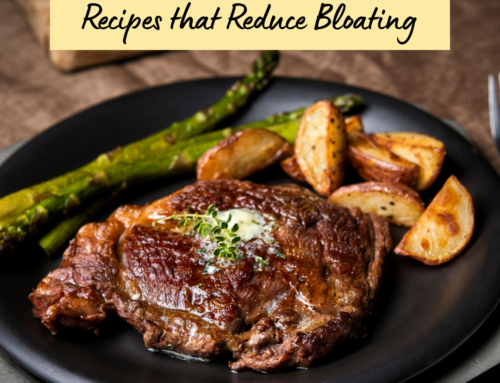Keto. Paleo. Vegan. Vegetarian. Gluten-free, dairy-free, low-carb, carnivore… the list goes on.
With all of the pop diets out there these days, how do you know which ones are healthy and would suit you?
Through this blog series, we’ll teach you how to evaluate diets based on science – no matter what your favorite influencer says about it.
Don’t worry. It’s easier than it sounds! Let’s jump in.
Criteria to Consider
When evaluating diets, you’ll want to check on a few different characteristics, including:
- Fiber intake
- Polyphenol content
- Probiotic / fermented food content
- Micronutrient intake
- Caloric intake
- Fat, protein, and carbohydrate intake
- Electrolyte intake
- Processed food content
- Gluten, dairy, or sugar intake: other triggers
- Price
- Sustainability
- Adherence / lifestyle match
That sounds like a lot – but tracking these criteria is much simpler than it sounds.
Let’s jump in! Today, we’ll talk about fiber.
Fiber Intake
Fiber is a carbohydrate found in plant foods that the body can not digest. It makes up the bulk of your you-know-whats (1).
Adequate fiber intake is essential for a healthy diet, especially for gut health (1).
Fiber confers several benefits. It:
- Supports your helpful gut microbes (2)
- Propels microbiome diversity (2)
- Encourages motility (3)
- Regulates your blood sugar (4)
- May increase satiety (5)
- May prevent or mitigate:
- Type two diabetes (6)
- Colon cancer (7)
- Cardiovascular disease (8)
- It is linked to decreased morbidity and mortality (disease and death) (9)
- Much more (4)
Fiber is valuable – leaving it out of your diet would rob you of the health benefits listed above.
Where to find fiber:
- Fruits
- Vegetables
- Grains like oats
- Nuts and seeds
- Legumes like beans
- Some fiber powders (may not be as beneficial)
Nutrition labels show how much fiber is in your food. Most dietitians recommend consuming between 25 and 40 grams of fiber per day. But beware – too much fiber can cause digestive distress. Balance is key.
So, when looking to evaluate a diet, see how feasible it would be to consume 25 to 40 grams of fiber per day. Let’s look at a few examples.
Let’s look at the keto diet first. Keto diets require the consumer to acquire 70 to 80% of their calories from fat, 10-20% from protein, and 5-10% from carbohydrates. It’s typically very high in animal products (10).
Keto diets are notoriously difficult to attain adequate fiber from unless ketogenic fiber powders are used (which may not be as beneficial as plant-derived fiber). Processed keto snacks may also contain additional fiber – but consider that processed food may be inflammatory.
Is it possible to consume 25 to 40 grams of fiber on keto? Well, yes, but it would require meticulous planning and tracking. Low fiber intake might be considered a con to eating a ketogenic diet.
What about a vegan diet?
Vegan diets consist solely of plant-derived foods, meaning vegans can not eat eggs, meats or fish, or any dairy – no animal products whatsoever.
That means – you guessed it – most foods vegans eat contain at least some fiber, other than oils. Even their protein sources like tofu and fat sources like nuts and avocadoes contain fiber.
This high fiber intake could be a bonus for some – but if you’re consuming more than 40 or 50 grams per day as a vegan, the diet could cause some digestive distress.
See the pattern here? If you’re looking to evaluate a diet’s fiber content, consider how often you would eat plant-based foods.
The following blogs in this series will go over the other criteria key to evaluating diets thoroughly. Tag us in photos of your fiber-rich meals on Instagram @igynutrition. Thanks, and see you next time!
References
- Veronese N, Solmi M, Caruso MG, Giannelli G, Osella AR, Evangelou E, Maggi S, Fontana L, Stubbs B, Tzoulaki I. Dietary fiber and health outcomes: an umbrella review of systematic reviews and meta-analyses. Am J Clin Nutr. 2018 Mar 1;107(3):436-444. doi: 10.1093/ajcn/nqx082. PMID: 29566200. https://pubmed.ncbi.nlm.nih.gov/29566200/
- Myhrstad, Mari C W et al. “Dietary Fiber, Gut Microbiota, and Metabolic Regulation-Current Status in Human Randomized Trials.” Nutrients vol. 12,3 859. 23 Mar. 2020, doi:10.3390/nu12030859 https://www.ncbi.nlm.nih.gov/pmc/articles/PMC7146107/
- Hillemeier C. An overview of the effects of dietary fiber on gastrointestinal transit. Pediatrics. 1995 Nov;96(5 Pt 2):997-9. PMID: 7494680. https://pubmed.ncbi.nlm.nih.gov/7494680/#:~:text=Fiber%20affects%20each%20phase%20of,causes%20in%20colonic%20transit%20time.
- https://www.cdc.gov/diabetes/library/features/role-of-fiber.html#:~:text=Health%20Benefits%20of%20Fiber&text=Specifically%2C%20fiber%20can%20help%3A,sugar%20in%20your%20target%20range.
- Slavin, J. and Green, H. (2007), Dietary fibre and satiety. Nutrition Bulletin, 32: 32-42. https://doi.org/10.1111/j.1467-3010.2007.00603.x
- Chandalia M, Garg A, Lutjohann D, von Bergmann K, Grundy SM, Brinkley LJ. Beneficial effects of high dietary fiber intake in patients with type 2 diabetes mellitus. N Engl J Med. 2000 May 11;342(19):1392-8. doi: 10.1056/NEJM200005113421903. PMID: 10805824. https://pubmed.ncbi.nlm.nih.gov/10805824/
- Kunzmann, Andrew T et al. “Dietary fiber intake and risk of colorectal cancer and incident and recurrent adenoma in the Prostate, Lung, Colorectal, and Ovarian Cancer Screening Trial.” The American journal of clinical nutrition vol. 102,4 (2015): 881-90. doi:10.3945/ajcn.115.113282 https://www.ncbi.nlm.nih.gov/pmc/articles/PMC4588743/
- McRae, Marc P. “Dietary Fiber Is Beneficial for the Prevention of Cardiovascular Disease: An Umbrella Review of Meta-analyses.” Journal of chiropractic medicine vol. 16,4 (2017): 289-299. doi:10.1016/j.jcm.2017.05.005 https://www.ncbi.nlm.nih.gov/pmc/articles/PMC5731843/
- Yang Yang, Long-Gang Zhao, Qi-Jun Wu, Xiao Ma, Yong-Bing Xiang, Association Between Dietary Fiber and Lower Risk of All-Cause Mortality: A Meta-Analysis of Cohort Studies, American Journal of Epidemiology, Volume 181, Issue 2, 15 January 2015, Pages 83–91, https://doi.org/10.1093/aje/kwu257
- https://www.health.harvard.edu/staying-healthy/should-you-try-the-keto-diet




